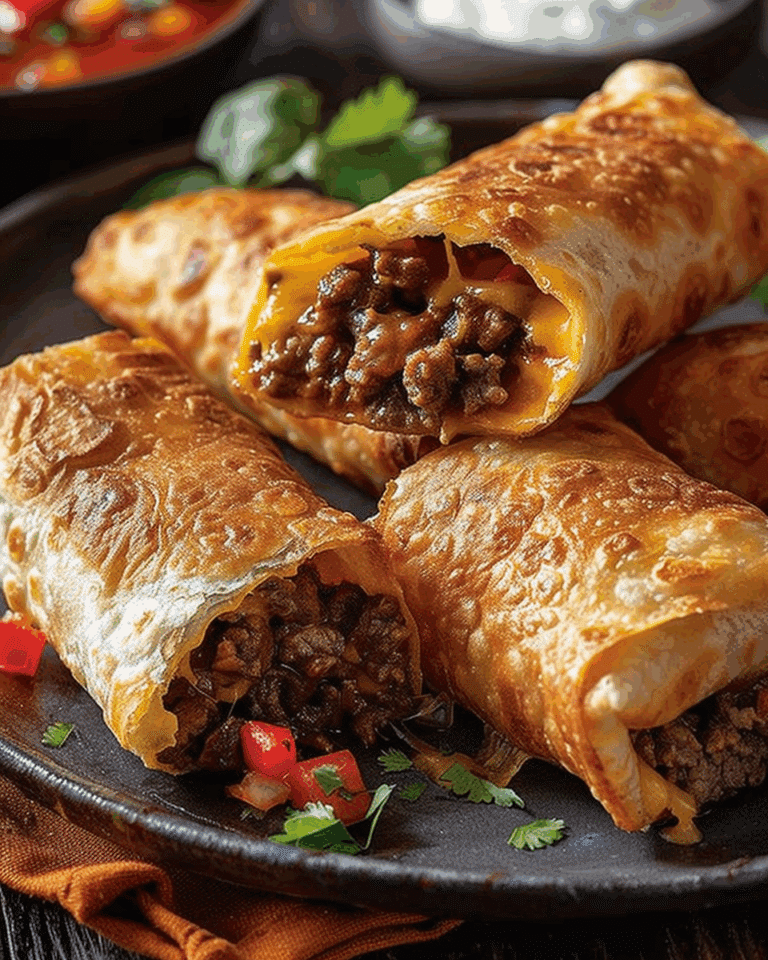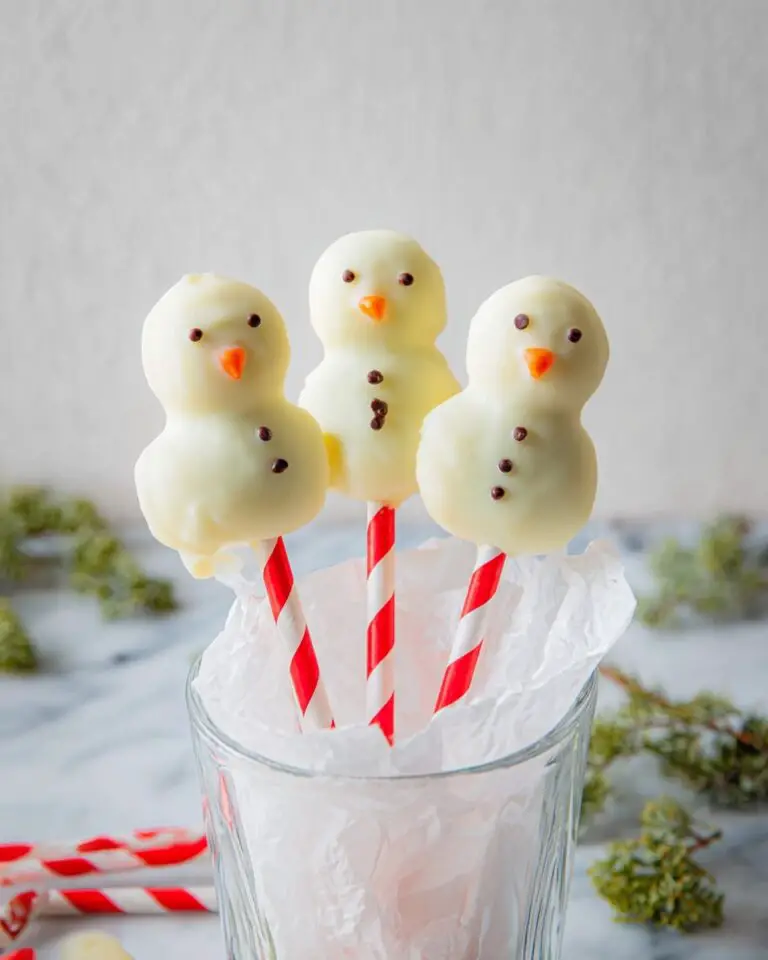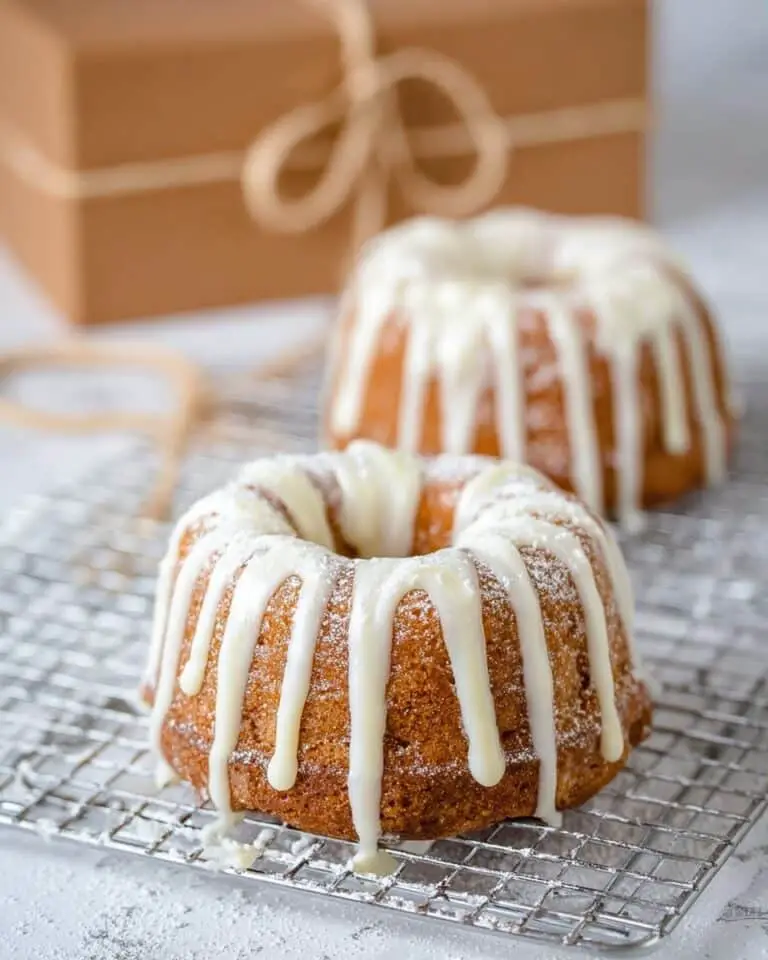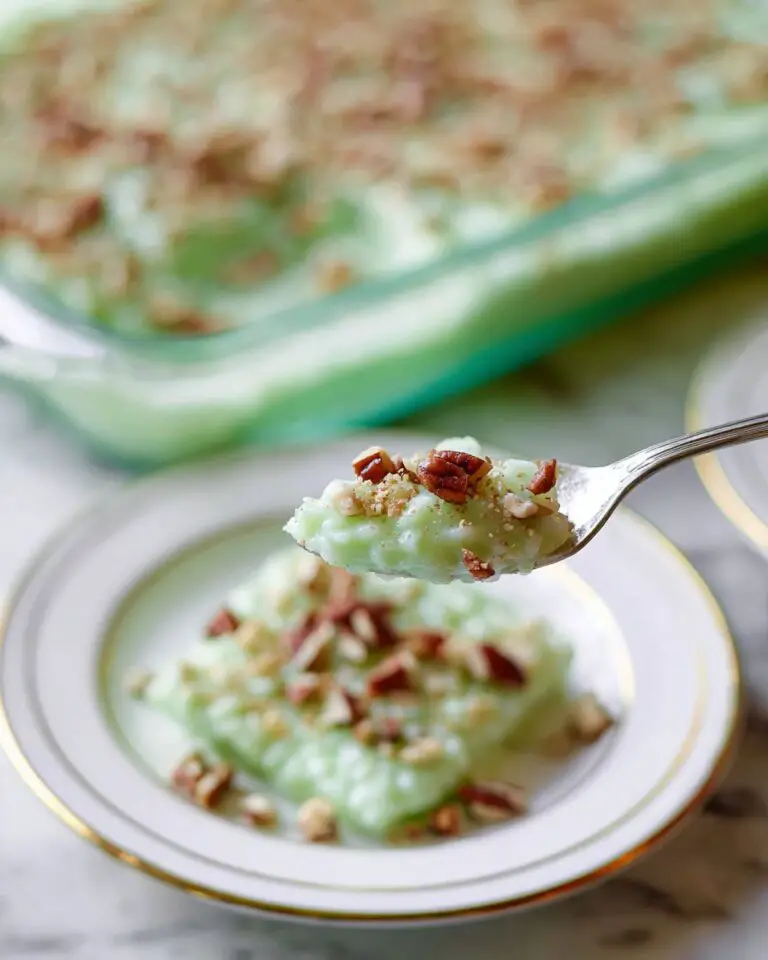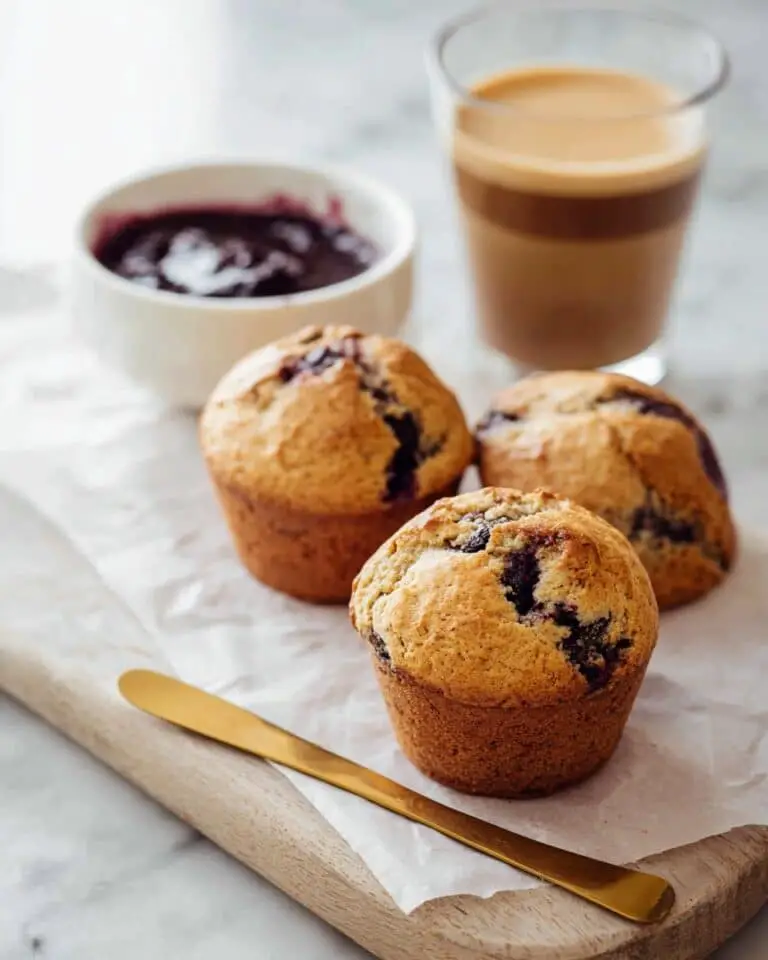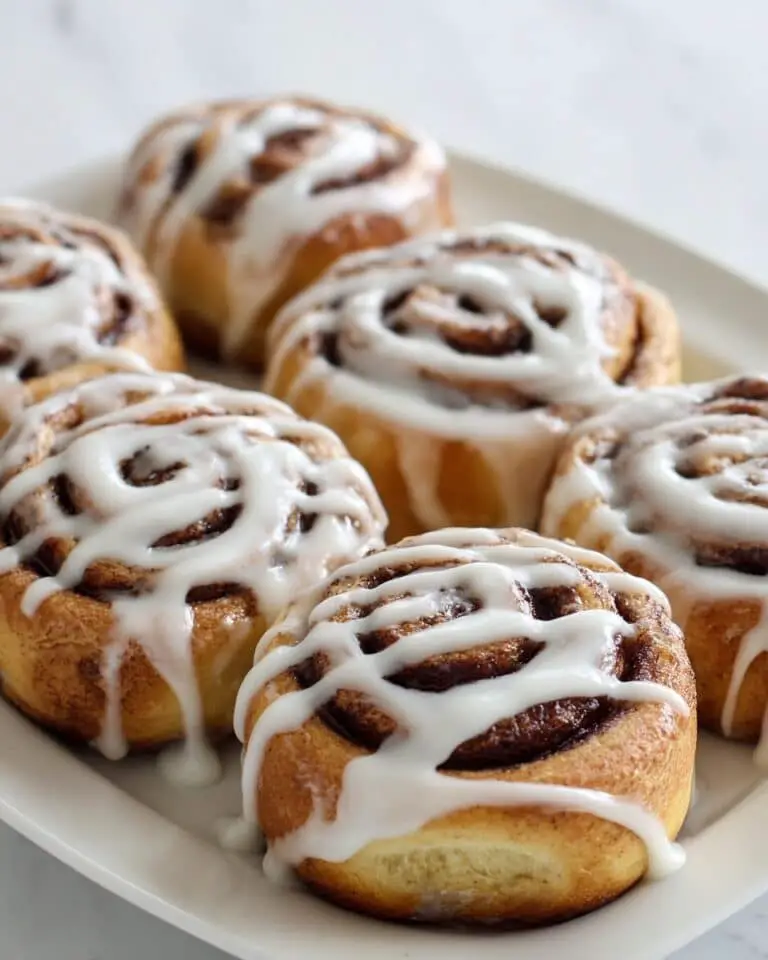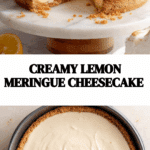If you’re searching for a dessert that combines the zesty brightness of lemon with the rich creaminess of cheesecake and the airy cloud-like sweetness of meringue, then this Lemon Meringue Cheesecake Recipe is your new best friend in the kitchen. It’s an irresistible combination of textures and flavors that will have everyone asking for seconds, featuring a buttery cookie crust, a luscious lemon-infused cheesecake filling, a tangy homemade lemon curd, and a perfectly toasted meringue topping. This recipe turns a classic favorite into an unforgettable showstopper that’s sure to brighten any day and satisfy every sweet tooth.
Ingredients You’ll Need
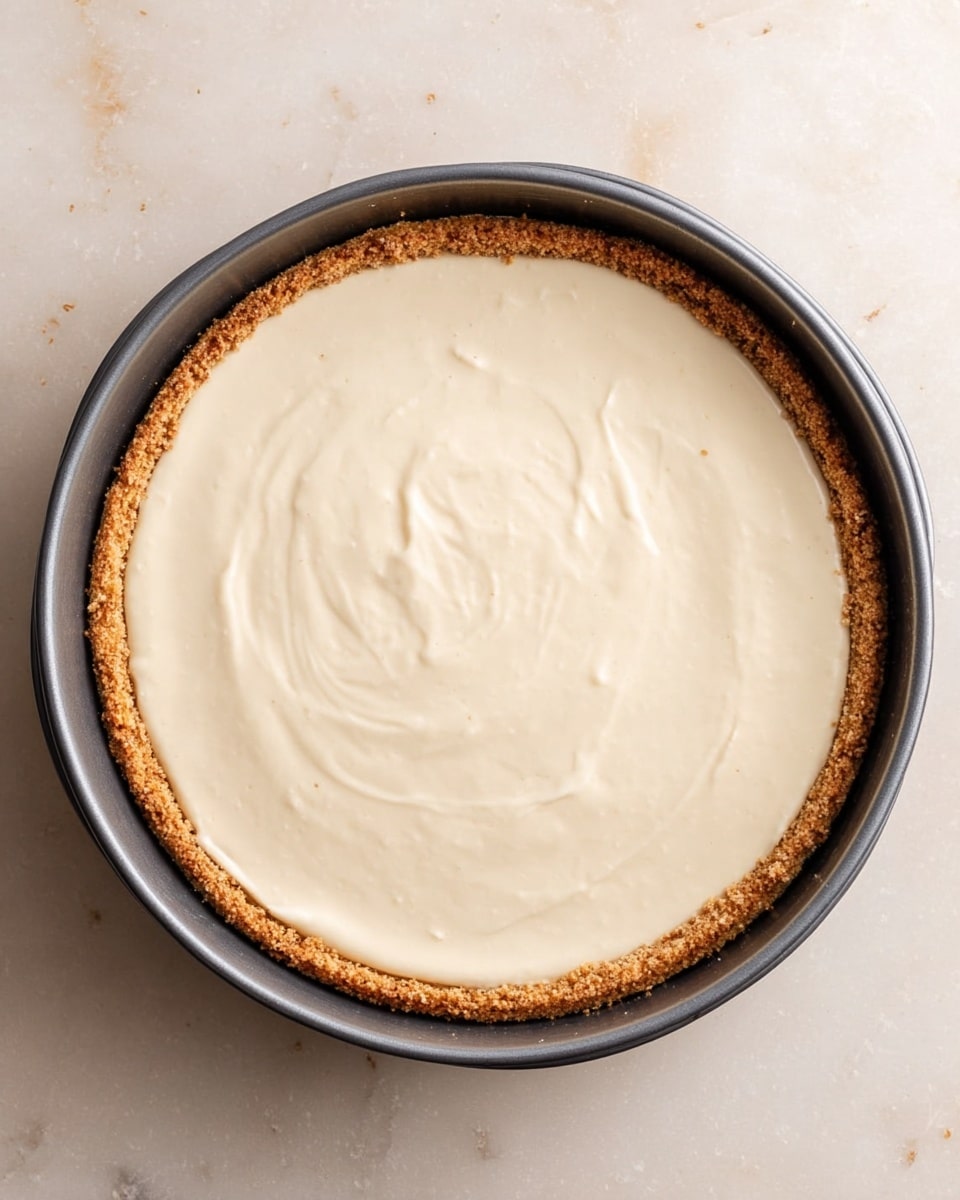
To make this Lemon Meringue Cheesecake Recipe shine, you’ll only need a handful of straightforward ingredients. Each one plays a crucial role, whether it’s the crumbly digestive cookies for that perfect crust, rich cream cheese for smoothness, or fresh lemon juice for a pop of sunshine that wakes up your palate. These simple ingredients come together to create layers of flavor and texture you’ll adore.
- Digestive cookies (250 g): The base for a crisp, buttery crust that holds all the cheesecake goodness together.
- Granulated sugar (varied amounts): Sweetens the crust, filling, lemon curd, and meringue perfectly without overpowering the tartness.
- Butter (90 g melted + 50 g cold): Adds richness to the crust and lusciousness to the lemon curd.
- Cream cheese (600 g, full fat): The creamy foundation of the cheesecake layer — make sure it’s room temperature for smooth mixing.
- Sour cream (80 g, 18%): Keeps the cheesecake moist and adds subtle tanginess that balances the lemon beautifully.
- Cornstarch (2 tbsp): Stabilizes the cheesecake filling so it sets perfectly without cracking.
- Lemon juice (150 g total): The star ingredient, bright and zesty, bringing fresh citrus flavor to the cheesecake and curd.
- Vanilla bean paste (1.5 tsp total): Warms up the flavors and provides a lovely depth in both filling and meringue.
- Eggs (3 whole + 1 egg + 1 egg yolk + approximately 3 egg whites): Provide structure and airiness in all layers — the rich filling, silky lemon curd, and fluffy meringue.
- Granulated sugar for meringue (180 g): Creates that glossy, sweet, and stable meringue topping that toasts up beautifully.
How to Make Lemon Meringue Cheesecake Recipe
Step 1: Prepare the Cookie Crust
Start by preheating your oven to 160ºC (320ºF). Crush the digestive cookies together with granulated sugar until they form a fine, sandy texture—this ensures a crust that’s crispy but not crumbly. Then, mix in the melted butter thoroughly. Press this mixture evenly into a 22 cm (9 in) springform pan lined with parchment paper, making sure to press it against the sides for that perfect edge. Bake it for 10 minutes, then allow it to cool completely to ensure a firm base for your filling.
Step 2: Whip Up the Cheesecake Filling
Keep your oven at the same temperature and begin by creaming the cream cheese for about a minute on low speed until smooth. Gradually add sugar and continue mixing gently to avoid incorporating air bubbles. In a separate bowl, combine sour cream and cornstarch until silky smooth. Slowly add this mixture to the cream cheese along with freshly squeezed lemon juice and vanilla bean paste for a vibrant, zesty undertone. Incorporate the eggs one by one, mixing gently after each addition to create a creamy, glossy filling that will bake into buttery perfection.
Step 3: Bake the Cheesecake in a Water Bath
Pour the cheesecake batter into the prepared crust. Next, set your springform pan inside a larger baking pan and fill with hot water halfway up the sides of your cheesecake pan—this water bath technique helps the cheesecake cook evenly and prevents cracking. Be sure to wrap the outside of the springform pan with several layers of aluminum foil to guard against water leaks. Bake for 1 hour and 10 minutes until the edges are set but the center still wiggles slightly.
Step 4: Cool the Cheesecake Slowly
After baking, gently jiggle the pan to confirm the center remains slightly jiggly. Turn off the oven and prop the door open slightly; leave the cheesecake in the oven for an hour to cool slowly and prevent shrinkage. Then set it on a cooling rack for another hour until it reaches room temperature. Finally, cover well with plastic wrap and refrigerate for at least 6 hours or preferably overnight so it firms up and develops its full flavor.
Step 5: Make the Luscious Lemon Curd
While the cheesecake bakes, prepare the homemade lemon curd. Combine lemon juice, sugar, whole egg, and egg yolk in a small saucepan, whisking constantly over medium heat until the mixture thickens and coats the back of a spoon. Strain the curd into a bowl to remove any cooked egg bits for silky smoothness, then stir in cold cubed butter until fully melted and glossy. Cover with cling film pressed directly onto the surface to prevent a skin and chill in the fridge.
Step 6: Whip Up the Perfect Meringue
Place egg whites and sugar over simmering water and whisk gently until the sugar has dissolved completely, creating a warm, silky base. Transfer immediately to your mixer and whisk on high speed until stiff peaks form and the mixture cools to room temperature. Beat in vanilla bean paste, giving you a fluffy, glossy meringue topping ready to crown your cheesecake.
Step 7: Assemble and Finish Your Lemon Meringue Cheesecake Recipe
Carefully release the chilled cheesecake from the springform pan and place it on your favorite serving dish. Smooth the cooled lemon curd over the top, then dollop or pipe the meringue generously over the curd layer. Use a kitchen torch to toast the meringue evenly until golden brown and beautifully textured. Pop the finished masterpiece back into the fridge until you’re ready to serve—ideally within 8 hours to enjoy the freshest meringue flavor.
How to Serve Lemon Meringue Cheesecake Recipe
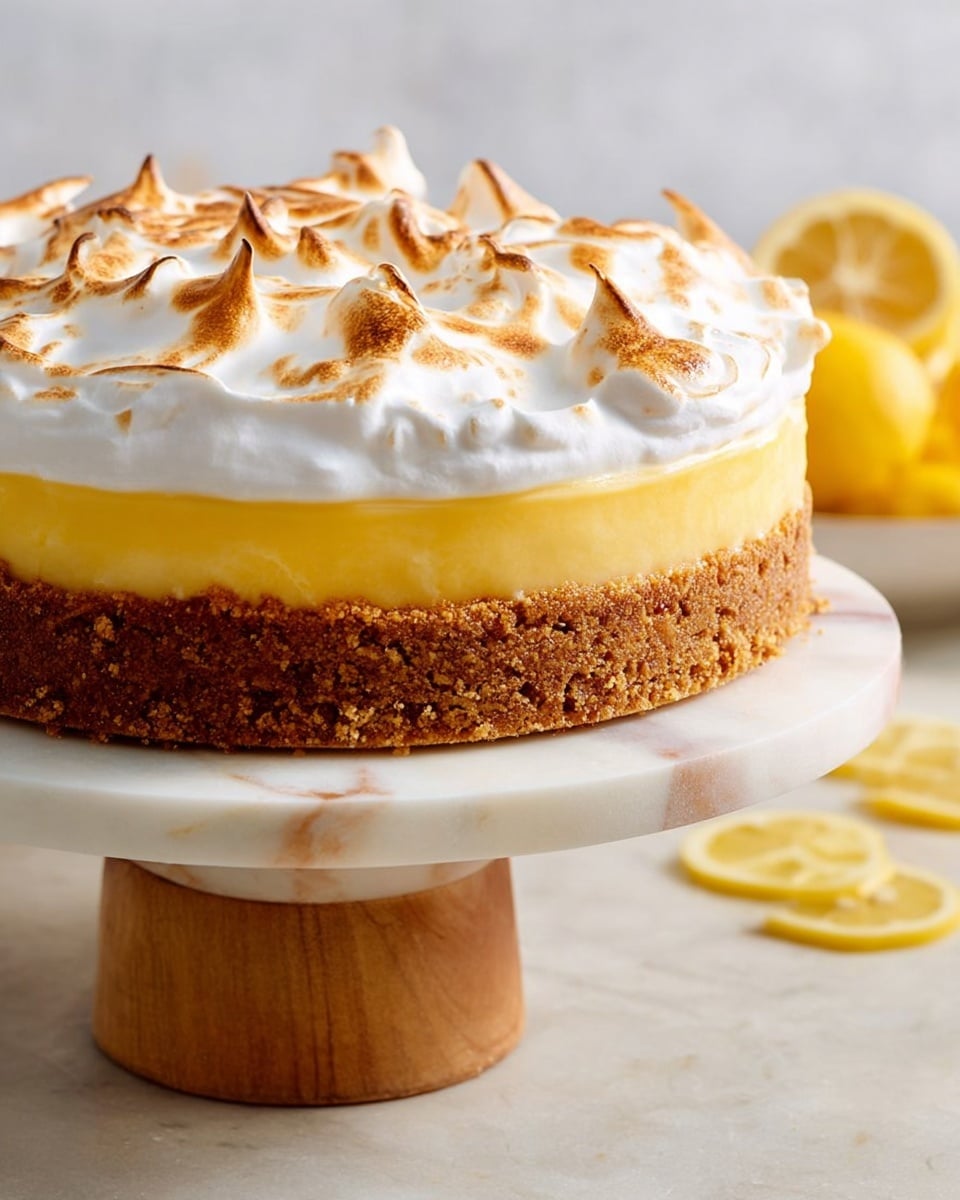
Garnishes
Adding a few thoughtful garnishes can elevate this dessert even further. Consider fresh lemon zest over the top for a bright pop of color and extra citrus aroma. Thin slices of candied lemon or edible flowers also add stunning accents that invite guests in before the first bite.
Side Dishes
This Lemon Meringue Cheesecake Recipe pairs wonderfully with light accompaniments that balance its richness. A dollop of freshly whipped cream or a few fresh berries (like raspberries or blueberries) refresh the palate, while a lightly brewed cup of green tea or sparkling lemonade complements the zesty flavors without overwhelming them.
Creative Ways to Present
Presentation counts for everything, especially for a showstopper dessert like this! Try slicing the cheesecake into neat wedges and serving on bright white plates to highlight the golden meringue and vibrant lemon curd. For a fun twist, serve individual portions in mini jars layered with extra lemon curd and crushed cookies for casual gatherings. No matter how you plate it, this Lemon Meringue Cheesecake Recipe always steals the spotlight.
Make Ahead and Storage
Storing Leftovers
Any leftover cheesecake should be tightly covered and stored in the refrigerator. It will keep beautifully for up to 3 days, during which the flavors meld and the texture remains creamy. Just be mindful that the meringue topping is best enjoyed within the first day for peak fluffiness.
Freezing
Freezing this cheesecake is possible but with a few notes: omit the meringue topping if freezing, as it doesn’t freeze well. Wrap the cheesecake tightly in plastic wrap and aluminum foil to prevent freezer burn. When ready to enjoy, thaw it overnight in the fridge before adding freshly made meringue to maintain that airy texture.
Reheating
Since cheesecake is best served chilled, reheating is generally not recommended. If the meringue feels slightly deflated after refrigeration, you can lightly toast it again with a kitchen torch just before serving to refresh its toasted appearance and texture.
FAQs
Can I use other types of cookies for the crust?
Absolutely! While digestive cookies are traditional for their mild sweetness and crunchy texture, graham crackers or even shortbread cookies make excellent alternatives, adding their own unique flavor profile to the crust.
What if I don’t have a kitchen torch for the meringue?
No worries! You can place the assembled cheesecake briefly under a very hot broiler for 30 seconds to 1 minute. Keep a close eye to avoid burning—just enough to get the meringue golden and toasted.
Why do you bake cheesecake in a water bath?
Using a water bath helps regulate temperature and adds moisture to the oven, preventing cracks and ensuring a silky smooth, evenly baked cheesecake.
Can I use lemon zest instead of lemon juice?
Lemon zest adds wonderful aroma and flavor, but the lemon juice brings essential acidity for the tangy profile and setting properties in the cheesecake and curd, so it’s best to use both for optimal balance.
How long can I prepare this Lemon Meringue Cheesecake Recipe ahead of time?
This cheesecake can be made up to 2 days in advance. Keep it covered in the fridge and add the toasted meringue topping fresh on the day you plan to serve for best texture and flavor.
Final Thoughts
This Lemon Meringue Cheesecake Recipe is truly a celebration of vibrant flavors, textures, and classic techniques, all rolled into one stunning dessert. It’s a brilliant way to impress family and friends or treat yourself to something decadent yet refreshingly light. Genuine citrus lovers will find themselves coming back for more, so don’t hesitate—grab those ingredients and start baking your new favorite dessert today!
Print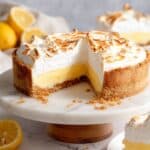
Lemon Meringue Cheesecake Recipe
- Total Time: 8 hours 10 minutes (including chilling time)
- Yield: 12 servings
Description
This Meringue Cheesecake is a luscious dessert featuring a buttery digestive cookie crust, a creamy lemon-infused cheesecake filling, topped with tangy homemade lemon curd and a light, toasted meringue. Baked in a water bath to ensure a perfectly smooth texture, and finished with a blowtorched meringue topping, this elegant treat is perfect for special occasions or indulgent gatherings.
Ingredients
Cookie Crust
- 250 g digestive cookies
- 1.5 tbsp granulated sugar
- 90 g butter, melted
Cheesecake Filling
- 600 g cream cheese, full fat, room temperature
- 200 g granulated sugar
- 80 g sour cream (18%), room temperature
- 2 tbsp cornstarch
- 70 g lemon juice
- 1 tsp vanilla bean paste
- 3 large eggs, room temperature
Lemon Curd
- 80 g lemon juice
- 100 g granulated sugar
- 1 whole egg
- 1 egg yolk (save the egg white for the meringue)
- 50 g cold butter, cubed
Meringue
- 90 g egg whites (approximately 3 egg whites)
- 180 g granulated sugar
- ½ tsp vanilla paste
Instructions
- Prepare Cookie Crust: Preheat your oven to 160ºC (320ºF) conventional. In a food processor, blend digestive cookies with 1.5 tbsp granulated sugar until it resembles fine sand. Add melted butter and blend to combine. Press this mixture firmly into the bottom and sides of a 22 cm (9 inch) springform pan lined with parchment paper. Bake for 10 minutes, then cool until the crust is cool to the touch.
- Prepare Cheesecake Filling: Keep oven temperature at 160ºC (325ºF) conventional. Using a stand mixer with a paddle attachment or a hand mixer, beat cream cheese on low speed for 1 minute. Gradually add 200 g sugar, scrape down the sides, and mix for another minute on low speed. In a small bowl, combine sour cream and cornstarch until smooth, then add to the cream cheese mixture along with lemon juice and vanilla bean paste. Mix on low speed until combined.
- Add Eggs: Incorporate eggs one at a time, mixing on low speed after each addition until fully combined. Scrape down sides and give a final mix. Pour the cheesecake batter into the prepared springform pan.
- Set Up Water Bath: Boil water in a kettle. Place the springform pan inside a 25 cm (10 inch) cake pan, then place this inside a larger roasting pan. Carefully pour hot water into the roasting pan until it reaches two-thirds up the side of the cake pan. Alternatively, wrap the springform pan in triple-layer aluminum foil to prevent water leakage.
- Bake Cheesecake: Bake in the preheated oven for 1 hour and 10 minutes. After baking, gently shake the pan; the center should still wobble slightly. Turn the oven off, crack the oven door open slightly, and let the cheesecake cool inside the oven for 1 hour.
- Cool and Chill: Remove cheesecake from the water bath and aluminum foil, then place on a cooling rack for 1 hour at room temperature. Wrap with plastic wrap and refrigerate for at least 6 hours, preferably overnight, to set fully.
- Make Lemon Curd: While the cheesecake bakes, in a small saucepan combine lemon juice, sugar, whole egg, and egg yolk. Whisk constantly over medium heat until mixture thickens. Remove from heat, strain through a sieve to remove cooked egg bits. Let cool for 2 minutes, then stir in cold cubed butter. Cover with cling film touching the surface and refrigerate until needed.
- Prepare Meringue: Combine egg whites and 180 g sugar in a mixing bowl. Place the bowl over a saucepan with simmering water, ensuring the water doesn’t touch the bowl. Whisk constantly until sugar dissolves and the mixture is warm to the touch. Transfer to a stand mixer and beat on high speed for 5-6 minutes until stiff peaks form and the mixture feels room temperature. Fold in vanilla paste.
- Assemble and Finish: Remove cheesecake from springform pan and transfer to a serving plate. Spread lemon curd evenly over the top. Spoon or pipe meringue on top of the lemon curd. Use a blowtorch to carefully brown the meringue. Refrigerate until serving. For best texture, consume the meringue cheesecake within 8 hours; the cheesecake alone can be stored up to 3 days in the fridge.
Notes
- Use room temperature eggs and cream cheese for smooth mixing and a defect-free cheesecake texture.
- Wrapping the springform pan with multiple layers of aluminum foil is crucial to prevent water from seeping into the cake during the water bath.
- The water bath baking method ensures gentle heat distribution, preventing cracks on the cheesecake surface.
- When making meringue, make sure sugar is fully dissolved to avoid gritty texture.
- Blowtorching the meringue gives a beautiful toasted finish and enhances flavor—exercise caution when doing this.
- The cheesecake tastes best after chilling overnight, allowing flavors to meld and texture to set.
- If you don’t have a blowtorch, briefly broiling the meringue can serve as an alternative but watch closely to avoid burning.
- Prep Time: 30 minutes
- Cook Time: 1 hour 20 minutes
- Category: Dessert
- Method: Baking
- Cuisine: Western

